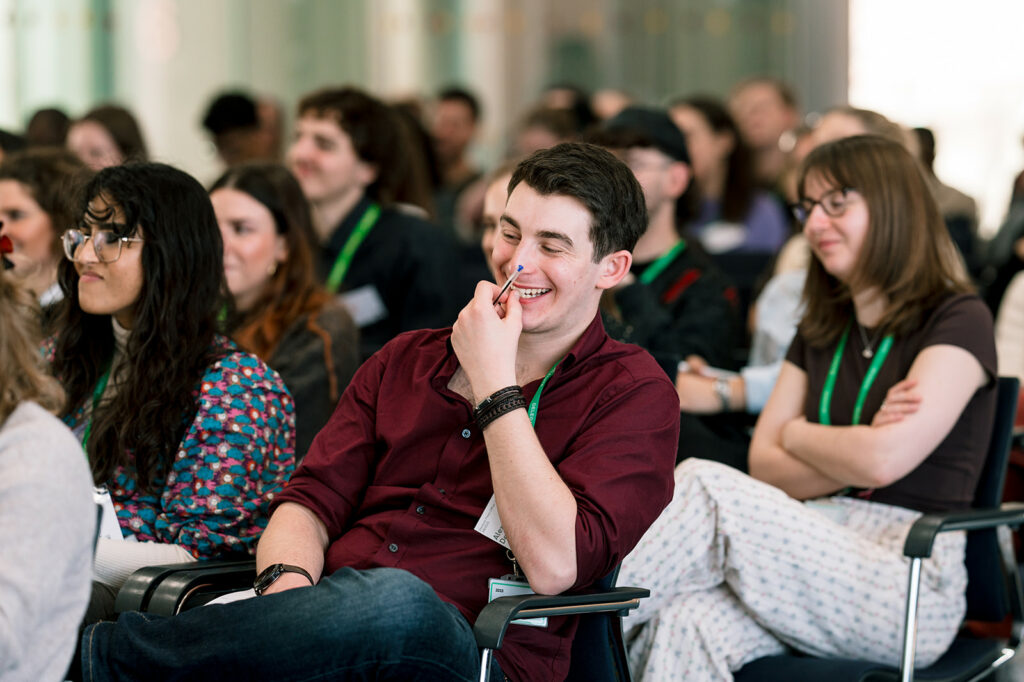In communications we know the importance of a good story, whether pitching to a journalist or producing our own content. So it was good to make some space to go over best practice with experts to speak at the Press Officer Training Day. From covering the basics, how to get the most out of your scientists, and the evolving ways organisations are communicating their brilliant science – we heard memorable examples throughout!
Mun-Keat Looi started, laying out the basics that to nail for a story to land, and then came examples and practical advice from Ben Kolbington. To close, Tristan Quinn shared new directions that his organisation is testing to tell their own stories and his first longer form video for The Crick.
Mun-Keat shared the essentials
Know your audience
You need to have the person you are trying to reach in mind before you start working on a story. What do they want to read, watch or listen to? Where can you reach them? Are you going via the media with a press release? If so, you need to get the journalist’s attention quickly, don’t get bogged down in the detail or too much background: if they’re interested, they’ll get to that. If you’re trying to reach the scientific community, think about routes beyond the media. Meet people where they’re at!
Have a clear objective
Once you’ve decided who your audience is, you need to be clear about what you want your readers/watchers/ listeners to do with this story. Stories bring facts and figures to life and can help an audience empathise with people, research and campaigns. Are you trying to change their behaviour, opinion, increase the organisation’s reputation, support fundraising, recruit patients into a trial etc.? You need to make that ‘call to action’ or ‘take home message’ clear.
Structure
- Introduction – an emotional draw or a case study to get readers interested and invested
- The ‘nutshell’ paragraph – what is the audience going to take away
- Context – the historical stuff, what we already know, why we’re talking about this now
- Body – explain the new development, breakthrough, change, impact
- Conclusion – this could be a take home message, or a feeling or thought – bring it back to what you want to get out of them!
Ben spoke about his experiences at ICR and tips to find stories in your organisation
- Get out of the office and build relationships: stories can be strengthened by a personal connection. Ben shared an example of the director at ICR who had complex and technical research which might be a challenge to get in the press. But Ben knew why they dedicated their life to this research – his mother had died of the rare bone cancer his work is now helping better understand and treat. His team pitched to the Observer and the result is an emotive, compelling story. You can read it here.
- You can turn the mundane into a fun and quirky story if you think creatively! Working with a PR agency, ICR had a poet engrave a poem onto a pill to promote the importance of discovering new drugs. This publicity helped generate good fundraising income. You can read about it here.
- Work with patients and case studies where you can – they are often at the heart of research and highlight the value of the work. But working with patients requires you to act sensitively and responsibly – your organisation should have strict policies around consent of where and how their story is used, and provide a duty of care before, during and after media work.
- Capture the right information so that you have a record of the story you want to tell! If it has all the promise of a good story at the outset, it’s worth spending the time to find the first patient, first findings and so on, these are invaluable resources when you go to tell the world about your story.
Tristan talked about the ways in which The Francis Crick Institute is expanding their storytelling
Tristan’s background is in documentaries and he is using his skills to tell long form stories that the Crick wants to communicate. Rather than rely solely on the shifting agendas of television, the team want to retain more control. The team is commissioning their own projects from BBC Podcasts, and a new features-focused magazine for funders and philanthropists.
The approach is in its early days, and their first project was a recent video based on the Crick’s involvement in the development of the next year’s flu vaccine. Gaining in depth access with the teams involved, the 15-minute film follows the processing of a single box of samples as it travels through a lab – helping to capture the spirit of the Crick and innovation happening within. You can watch it here.
We’re thankful to our panel for sharing their insights. Storytelling is a key skill for STEM communications professionals and it is fascinating to see that the horizons for how we approach it seem to be expanding!

Editor’s note: These are some of the helpful tips that were shared during the Storytelling session at the Stempra Press Officer Training Day in March 2025. Our guests were Ben Kolbington (Head of Communications and Deputy Director at The Institute of Cancer Research), Mun-Keat Looi (International Features Editor, BMJ and Journalism Lecturer at Imperial College London), Tristan (Video and Multimedia Production Lead, Francis Crick Institute), and Shane Canning (Head of Communications, Generative AI Laboratory, University of Edinburgh) was our session chair.
